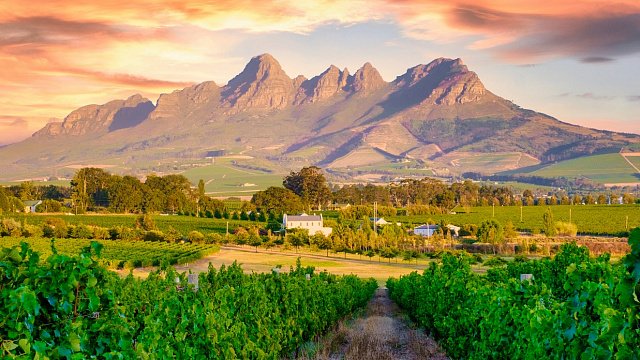04.07.24
17:12
How South Africa can attract tourists through its wildlife and nature
Tourism makes South Africa the destination of choice domestically and globally
South Africa is a destination that captivates travellers with its diverse landscapes, rich culture, and unique vistas. From the majestic Drakensberg Mountains to the sun-drenched beaches of the Indian Ocean, the country boasts a wide array of natural wonders.
“Tourism has a very big, positive role, impact on the country because tourism is developing here from the point of view of ecology; it is extremely important since both farms and nature reserves make it possible to maintain nature in a more pure organic form”
Irina Filatova Expert in the field of African history
South African Wildlife: The World-Famous Safari
South Africa is renowned for its extraordinary wildlife and offers some of the world’s most popular safaris. The famous Kruger National Park, a vast expanse of savannah teeming with elephants, lions, leopards, rhinos, and buffalo, is a favourite destination for any tourist or wildlife enthusiast.
According to the park’s official website, Kruger National Park covers two of South Africa’s nine provinces: Limpopo and Mpumalanga. The Kruger National Park spans more than 19,455 km2, measuring 350 km in length from north to south and 60 km in width from east to west.
The Limpopo River and the borders of South Africa and Zimbabwe comprise the reserve’s northern boundary, while its entire eastern boundary traces the border of Mozambique.
Several significant rivers, such as the Letaba, Limpopo, Sabie, and Umgwenya (Crocodile) Rivers, pass through the safari park. Most of the region is flat, with sporadic breaks caused by the Lebombo mountain range that stretches north-south along the border with Mozambique.
The park’s elevation ranges from 260 to 440 metres above sea level, with Handiwa at Malelane, south of the safari park, having the highest point (839 metres) and Sabi Gorge having the lowest.
There are more than 254 historical and cultural sites within the park’s boundaries; the rest still need to be explored. These monuments cover a huge period, from the Stone Age to the 20th century.
There are more than 254 historical and cultural sites; the remaining ones still require exploration. The Stone Age to the 20th century is a vast period covered by these monuments.
Irina Filatova, Emeritus Professor at the University of KwaZulu-Natal (South Africa), said in an exclusive interview with TV BRICS that “South African safaris are in great demand; there are huge queues of locals and tourists going there since it is a wilderness area that is extremely hard to find anywhere else.”
South African Diverse Landscape
In addition to wildlife, South Africa showcases an amazing variety of landscapes. The beauty of the Cape Floral Kingdom, a UNESCO World Heritage Site, is home to a huge variety of plant life, including the unique fynbos vegetation.
According to the official
website of the UNESCO World Heritage Convention, the area is one of the world’s largest centres of terrestrial biodiversity.
Though it makes up less than 0.5 per cent of Africa’s total land, approximately 20 per cent of the continent’s flora is found there. The flora exhibits exceptional diversity, density, and endemism, ranking among the highest globally. Of the estimated 9,000 plant species in the area, over 69 per cent are indigenous, 1,736 of which have been classified as threatened, and 3,087 of which are of conservation concern. One of the 35 global hotspots for biodiversity has been recognised as the Cape Floral Region.
The historical legacy of South Africa
The fight against apartheid is etched in South Africa’s past. Tourists can now explore historical sites, museums, and monuments that narrate the tale of that turbulent era.
Based on the history of apartheid, the Apartheid Museum in Johannesburg claims to be the world’s most prestigious museum devoted to South Africa in the 20th century.
The museum has an independent board of trustees and is registered as a public-benefit organisation, meaning it is not for profit.
In addition to providing visitors with a history of the nation, the museum narrates the tale of South Africa’s orderly shift to a democratic society devoid of racial divisions. This is why, according to the museum’s official website, visitors to South Africa should make time to explore the Apartheid Museum in Johannesburg.
Variety of cultures in South Africa
The eleven official languages of South Africa are Sepedi (also called Sesotho sa Leboa), Sesotho, Setswana, SiSwati, Tshivenda, Xitsonga, Afrikaans, English, isiNdebele, isiXhosa, and isiZulu, as stated in the country’s
constitution.
Consequently, the country offers a diversity of cultures, from the vibrant Zulu culture with their traditional dances and colourful beadwork to the Xhosa people known for their unusual language. Each community contributes to the country’s unique cultural mosaic. All this attracts tourists from all over the world.
South African tourism
The official website of the South African government reports that in 2022, there were about 5.7 million tourists who visited the nation, and in the first quarter of 2023, there were over two million visitors, which is more than twice as many as in the same period the previous year.
In 2023, the e-visa system was extended to 20 additional nations after it was first introduced for 14 countries.
Photo:
iStock
Back

